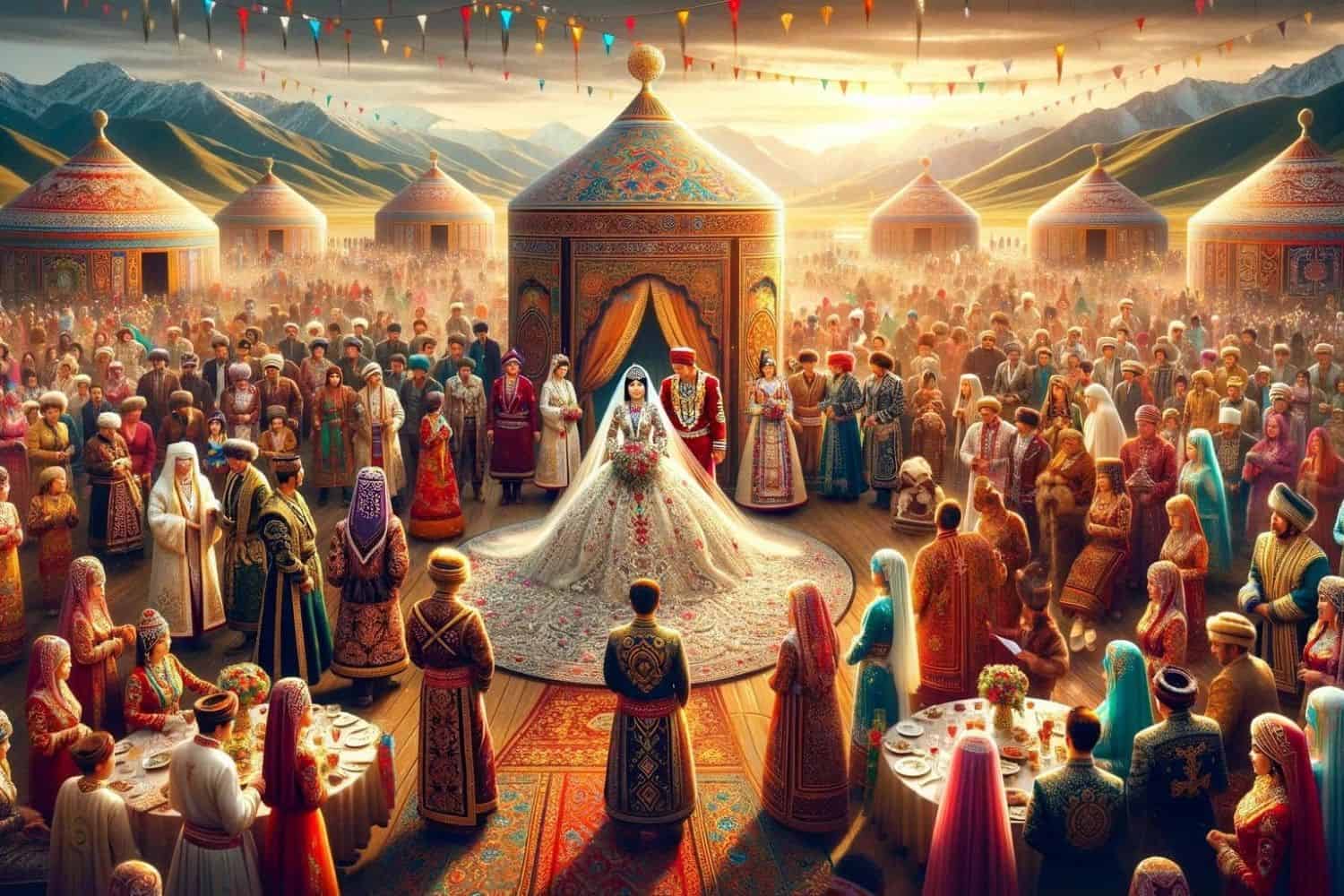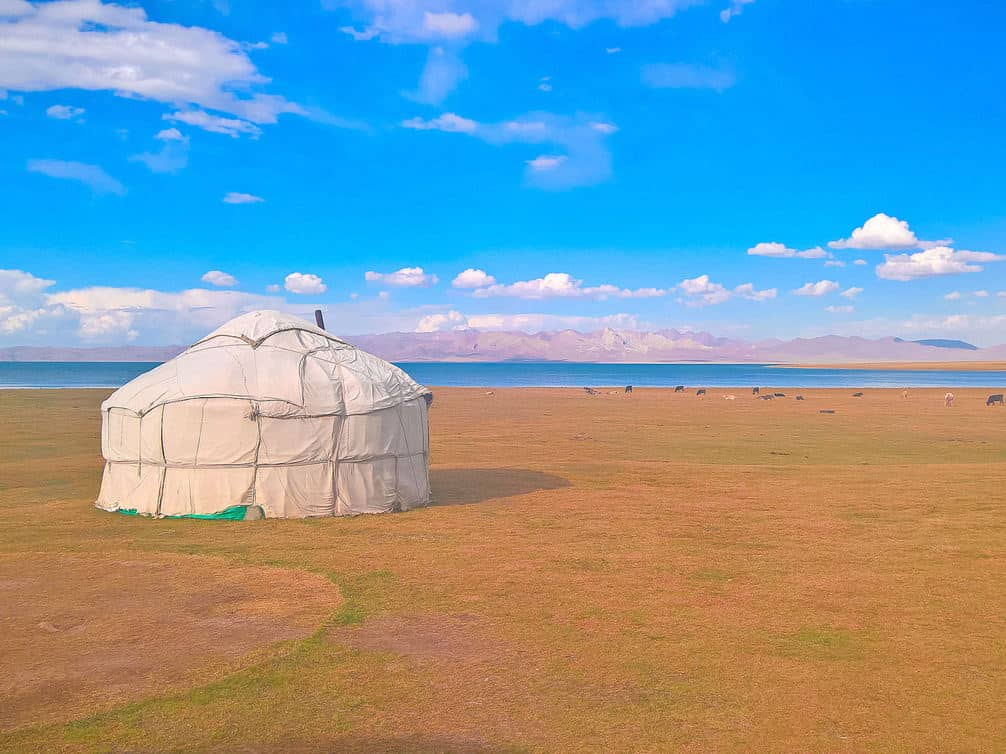Table of Contents
Explore the rich of Kyrgyzstan Culture as we delve into the customs, traditions, and heritage that shape this vibrant nation. Kyrgyzstan boasts a diverse tapestry of customs and practices, deeply rooted in its history and influenced by a range of factors including geography, ethnicity, and religion.
Hospitality holds a significant place in Kyrgyzstan culture, with guests warmly welcomed and treated with utmost respect. Family plays a central role in Kyrgyz society, fostering strong bonds and a deep sense of community among its members. As with any culture, Kyrgyz customs continue to evolve, reflecting the country’s unique blend of traditions and contemporary influences.
Understanding the culture of Kyrgyzstan, one can gain valuable insights into the intricacies of this multifaceted society.
Kyrgyzstan Culture
To begin understanding the culture and customs of Kyrgyzstan, here are some key points:
- Ethnic Diversity: Kyrgyzstan is characterized by a diverse array of ethnic groups, each contributing its own unique customs and traditions. Major ethnic communities include the Kyrgyz, Uzbeks, Russians, and Dungans.
- Languages: Kyrgyz and Russian are the official languages, but various regional languages and dialects are spoken across the country.
- Islamic Influence: While Kyrgyzstan has a Muslim majority, with Sunni Islam being the predominant branch, the practice of Islam varies among different communities. Islamic traditions influence daily life, including prayer, fasting, and adherence to religious customs.
- Greetings: Greetings are significant in Kyrgyzstan culture, with handshakes being common among men. Between genders, greetings are often verbal and accompanied by respectful gestures.
- Traditional Dress: Traditional Kyrgyz clothing, like the “chyptama” for men and “kiyiz” for women, reflects the country’s cultural heritage. Attire varies by region and occasion.
- Cuisine: Kyrgyz cuisine is characterized by dishes like “beshbarmak,” “laghman,” and “manty,” which showcase Central Asian flavors with influences from neighboring countries.
- Hospitality: Hospitality is deeply ingrained in Kyrgyzstan culture. Guests are warmly welcomed and offered refreshments, often including tea and traditional snacks.
- Respect for Elders: Respect for elders is a fundamental value in Kyrgyz society, with younger generations showing deference through words and actions.
- Arts and Crafts: Kyrgyzstan has a rich tradition of handicrafts, including felt-making, carpet-weaving, and jewelry craftsmanship.
- Music and Dance: Traditional Kyrgyz music features instruments like the “komuz” and “kyl-kyiak,” accompanied by lively folk dances that are integral to cultural celebrations.
- Festivals: Kyrgyzstan celebrates various festivals, including Nowruz (New Year), Kurman Ait (Eid al-Fitr), and Orozo Ait (Eid al-Adha), marked by special prayers, feasts, and communal gatherings.
- Family and Community: Family plays a central role in Kyrgyz society, with strong community ties providing support and social cohesion.
- Gender Dynamics: Traditional gender roles are present in Kyrgyzstan culture, although modernization and urbanization are influencing changes in societal expectations.
- Marriage Customs: Marriage customs often involve matchmaking by families, with arranged marriages being common. Marriage is seen as a union not only between individuals but also between families.
- Historical Resilience: Kyrgyzstan’s history, marked by nomadic traditions and periods of external influence, has contributed to the resilience and adaptability of its culture.
These customs and traditions shape the vibrant tapestry of Kyrgyzstan culture, reflecting its rich heritage and enduring sense of community.
Kyrgyzstan Traditional Attire
The traditional attire of Kyrgyzstan is a colorful reflection of the country’s diverse cultural heritage, geographical influences, and historical roots. Each piece of clothing carries with it a story of tradition, functionality, and cultural significance.

1. Regional Diversity: Kyrgyz traditional clothing varies greatly across different regions, influenced by factors such as climate, lifestyle, and ethnic heritage. In mountainous areas, where temperatures can be harsh, people often opt for heavier, layered garments, while those in warmer regions prefer lighter clothing.
2. Kyrgyz Clothing: The traditional attire of the Kyrgyz people typically includes the “chapan” for men and the “shyrdak” for women. The chapan is a long, quilted coat worn over other layers, providing warmth and protection from the elements. The shyrdak is a felt rug adorned with colorful patterns and designs, often used as clothing or for decorative purposes.
3. Uzbek and Russian Influences: Due to historical interactions and cultural exchanges, Kyrgyz traditional attire also bears influences from neighboring Uzbek and Russian cultures. For instance, Uzbek-style robes and hats are sometimes worn by Kyrgyz men, while Russian-style dresses and headscarves are popular among Kyrgyz women, especially in urban areas.
4. Nomadic Heritage: Kyrgyz nomads have a distinct style of clothing suited to their mobile lifestyle. Traditional nomadic attire includes fur-lined coats, felt hats, and leather boots, providing warmth and protection during long journeys across the steppes.
5. Symbolism and Ornamentation: Kyrgyz traditional clothing is often adorned with intricate embroidery, beadwork, and decorative elements, each carrying symbolic meanings related to folklore, spirituality, and cultural identity. The colors and patterns used in clothing can also signify social status, clan affiliation, or marital status.
6. Ceremonial Dress: Special occasions such as weddings, festivals, and religious celebrations are marked by the donning of elaborate traditional attire. These garments are embellished with ornate designs and craftsmanship, serving as symbols of cultural pride and heritage.
7. Modern Influences: While traditional attire remains an integral part of Kyrgyzstan culture, modernization and globalization have led to the adoption of Western clothing styles, especially among the younger generation and urban dwellers. However, traditional garments continue to be worn with pride during cultural events and celebrations.
In summary, Kyrgyz traditional attire is more than just clothing; it is a reflection of the country’s rich cultural tapestry, blending ancient traditions with modern influences to create a unique and vibrant identity.
Kyrgyzstan Marriage Traditions
Marriage traditions in Kyrgyzstan are deeply ingrained in its diverse cultural tapestry and religious beliefs, with each ethnic group and region having its unique customs and rituals. These traditions are a cornerstone of Kyrgyz society, blending historical practices with contemporary influences.

1. Matchmaking and Arranged Marriages: Arranged marriages are prevalent in Kyrgyzstan, with families often taking an active role in finding suitable partners for their children. Matchmakers, known as “kudukchular” or “kakakchular,” facilitate the process by considering factors like family background, social status, and compatibility.
3. Bridal Negotiations: Before formalizing the engagement, families engage in negotiations known as “kyz uzatuu” or “toy kiluu.” These discussions involve agreeing on the terms of the marriage, including the bride price, which is traditionally paid by the groom’s family to the bride’s family.
4. Engagement Ceremony: Once the terms are agreed upon, the engagement ceremony, called “nikka,” takes place. Family and friends gather to celebrate the union, exchange gifts, and bless the couple’s future together.
5. Wedding Festivities: Kyrgyz weddings are grand celebrations that last several days and involve various rituals and ceremonies. The main wedding ceremony, known as “toy,” includes traditions such as the “kozuo tushuu” (bride’s departure) and the “orku saluu” (exchange of vows).
6. Bride’s Attire: Brides traditionally wear “elin toshtuk,” a richly embroidered dress adorned with intricate patterns and symbols. The groom’s attire typically includes a “chapan” (traditional coat) and a “kalpak” (felt hat), symbolizing masculinity and honor.
7. Dowry and Gifts: In addition to the bride price, the groom’s family may provide gifts and dowry to the bride, symbolizing their commitment and support for her future.
8. Religious Blessings: Marriage is considered a sacred union in Kyrgyzstan culture, often accompanied by religious blessings and recitations from the Quran. Imams or religious leaders officiate the ceremony, emphasizing the importance of faith and spirituality in the marital bond.
9. Post-Wedding Customs: After the wedding, newlyweds are welcomed into their new household with celebrations like the “kaindy,” where the bride is introduced to her in-laws, and the “besik toi,” a ceremony celebrating the birth of the couple’s first child.
10. Community Participation: Kyrgyz weddings are community affairs, with neighbors, friends, and relatives coming together to celebrate and offer their support to the newlyweds. The festivities include music, dance, and feasting, fostering a sense of unity and camaraderie.
11. Evolving Traditions: While arranged marriages remain common, there is a growing trend toward love marriages, particularly among the younger generation and in urban areas. However, even in these cases, traditional customs and ceremonies are often incorporated to honor cultural heritage and family traditions.
In conclusion, marriage traditions in Kyrgyzstan reflect the importance of family, community, and cultural identity, serving as a bridge between the country’s rich history and its evolving social landscape.
Kyrgyzstan Food Culture
Kyrgyzstan’s food culture is a captivating fusion of traditions influenced by its history, geography, and the blending of culinary practices from Central Asia, Russia, and China.

- Regional Variation: Food from Kyrgyzstan diverse geography, which includes mountainous terrain and fertile valleys, has resulted in a wide array of regional cuisines. Each region incorporates local ingredients and traditional cooking techniques, contributing to a rich tapestry of flavors.
- Staple Foods: Kyrgyz cuisine relies heavily on staple foods such as meat, dairy products, grains, and root vegetables. Common staples include “beshbarmak” (a dish of boiled meat and noodles), “manty” (dumplings), and “laghman” (hand-pulled noodles).
- Nomadic Influence: The nomadic heritage of Kyrgyzstan is reflected in its cuisine, with dishes designed for portability and longevity. Foods like “kumis” (fermented mare’s milk) and “kazy” (air-dried horse sausage) are staples among nomadic communities.
- Meat Dishes: Meat plays a central role in Kyrgyz cuisine, with lamb, beef, and horse meat being popular choices. Grilled meats, skewers, and hearty stews are common dishes, often seasoned with local herbs and spices.
- Dairy Products: Dairy products feature prominently in Kyrgyz cuisine, with yogurt, kefir, and various cheeses being consumed regularly. “Kurut” (dried sour milk balls) is a traditional snack beloved by many.
- Bread and Grains: Bread, particularly flatbreads like “lepeshka” and “boorsok” (fried dough), is a staple in Kyrgyz cuisine. Grains such as rice, millet, and barley are also widely used in various dishes.
- Seasonal Ingredients: Kyrgyz cuisine makes use of seasonal ingredients, with fresh fruits and vegetables playing a significant role in summer dishes, while preserved foods like pickles and jams are enjoyed during the winter months.
- Tea Culture: Tea holds a special place in Kyrgyzstan culture, with black tea being the beverage of choice. Tea is served throughout the day and is often accompanied by sweets, pastries, or snacks.
- Hospitality: Kyrgyz hospitality is legendary, with guests being warmly welcomed and offered food and drinks upon arrival. Sharing meals is a common practice, fostering bonds of friendship and community.
- Cultural Resilience: Despite historical and cultural changes, Kyrgyz cuisine has retained its authenticity and continues to evolve while preserving its traditional flavors and culinary techniques.
Book our services
Our services as a travel agency in Kyrgyzstan ensure that your journey is not only enjoyable but also informative and hassle-free. Kyrgyzstan’s cultural delights, historical marvels, and natural wonders await your exploration with RJ Travel LLC. Our Kyrgyzstan Private Tours are designed to immerse you in the rich cultural heritage, historical significance, and breathtaking landscapes of this extraordinary nation.
Contact Us and our team will make sure to help you plan your trip to Kyrgyzstan when it’s safe and ready for travel. Whether you’re interested in joining a pre-arranged Kyrgyzstan small group tour or creating a custom itinerary, we are here to make your Kyrgyzstani adventure an unforgettable reality.
More About Kyrgyzstan
[the-post-grid id=”50386″ title=”Kyrgyzstan Main page”]
Book Your Trip to Kyrgyzstan Today!
Embark on an unforgettable journey and explore the allure of Kyrgyzstan through our exclusive tours.



